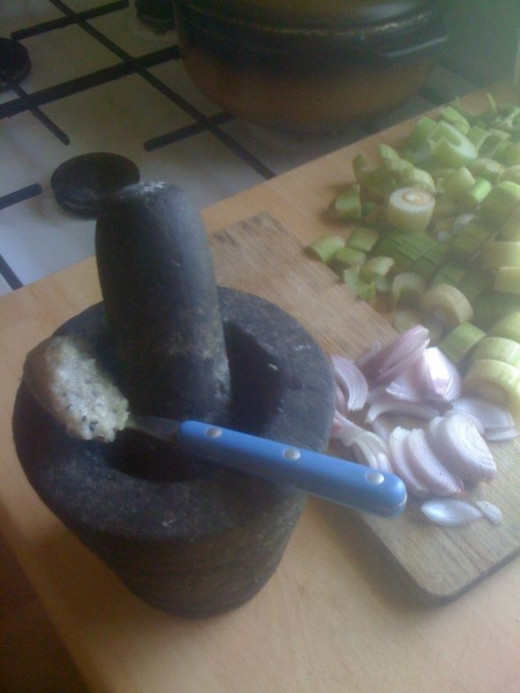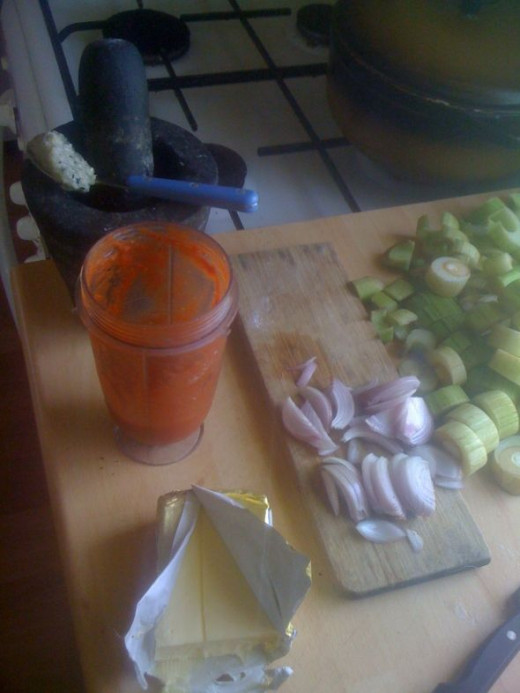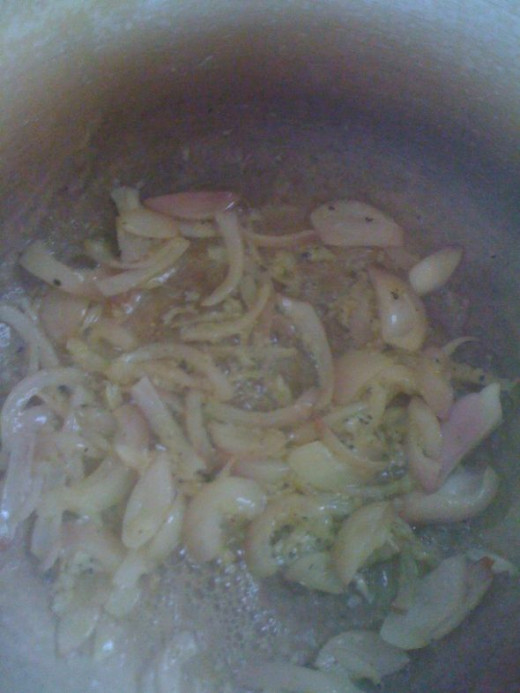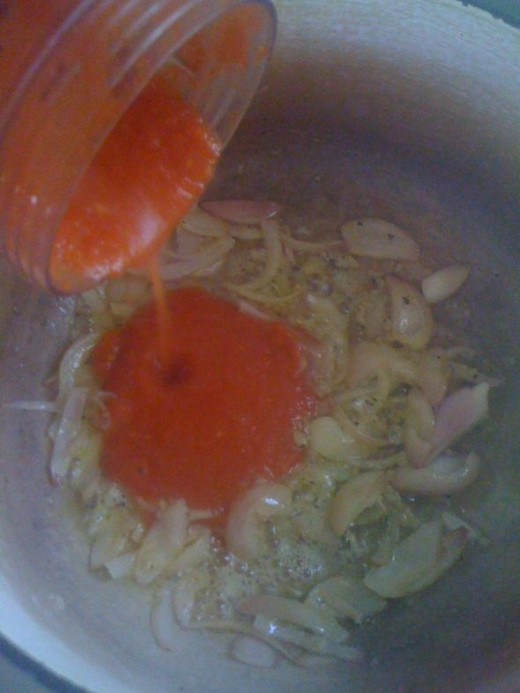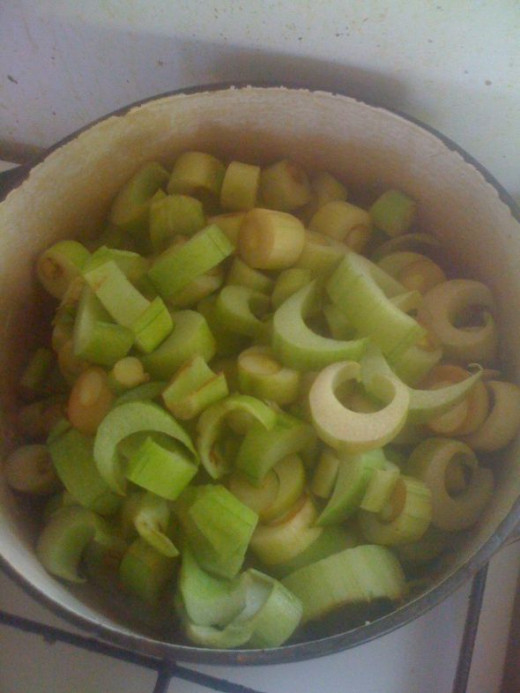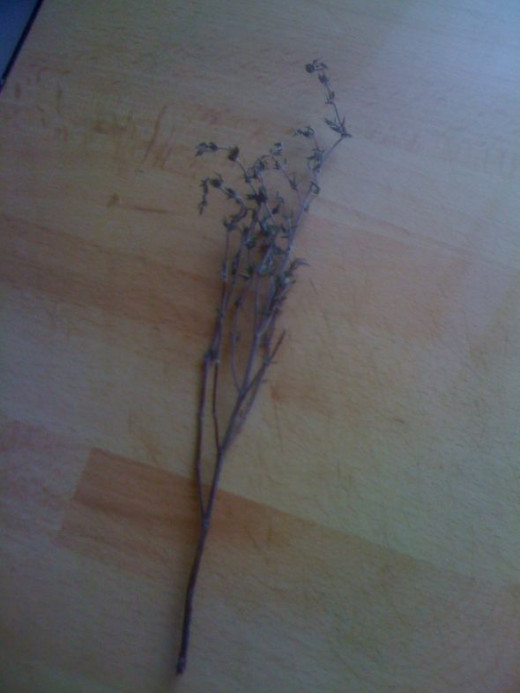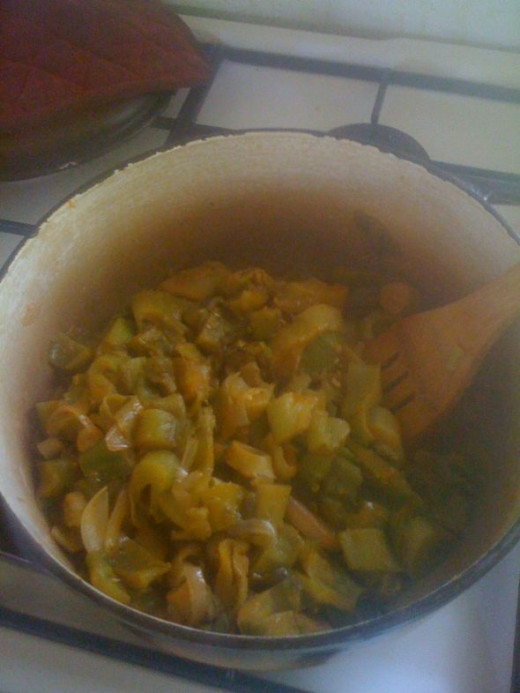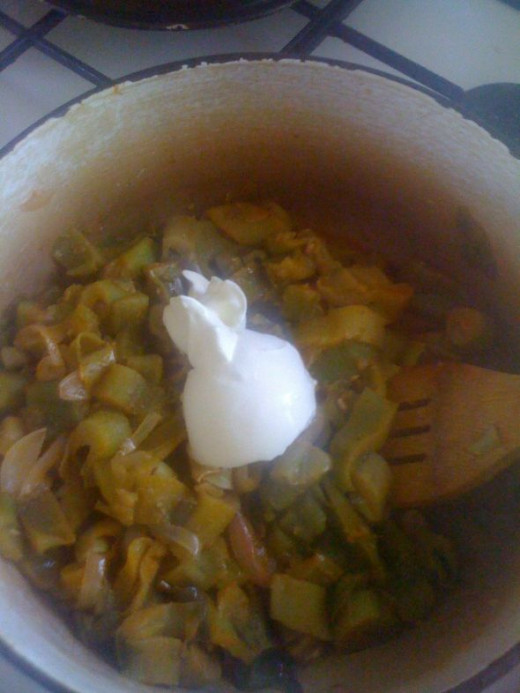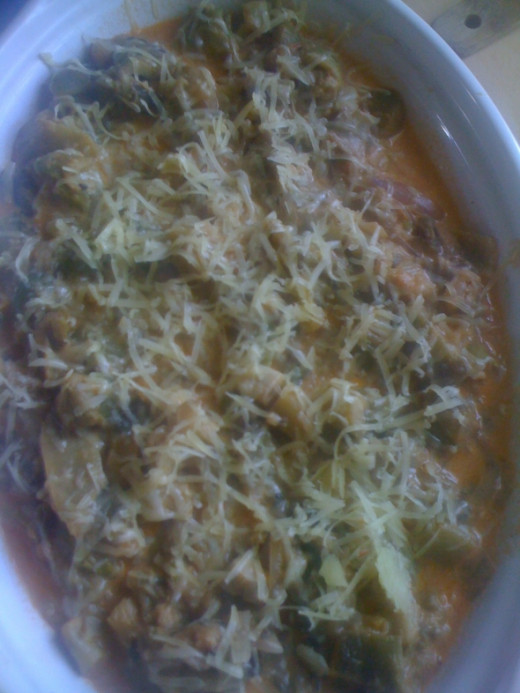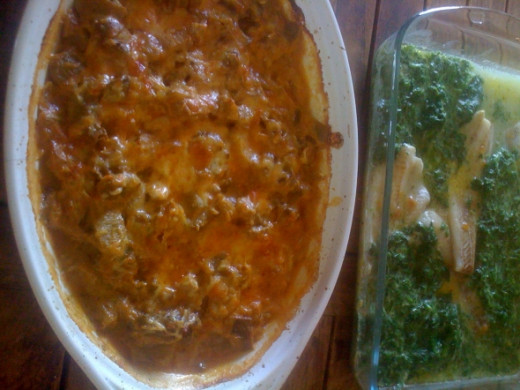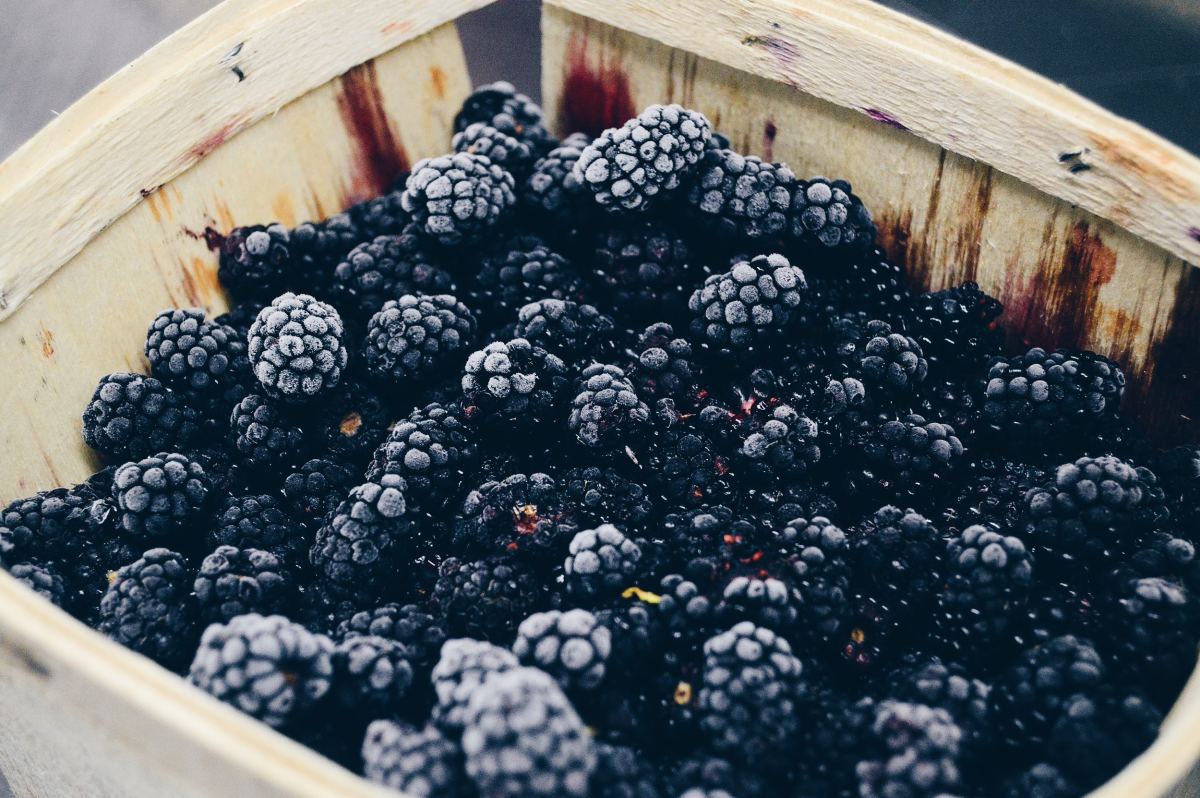How to Cook Taro Stalks - Picture Tutorial

Cooking taro stalks - step by step picture instructions
My favourite local lunch dish is something few of us eat regularly - taro stalks. Since information on taro stalks isn't that easy to find, I'm going to write about it myself.
I hope my instructions, tips and step-by-step pictures help you learn to cook taro stalks. They really are delicious, easy to cook and good for you!
Taro stalks are the spongy, tender sticks attached to the taro root. If you live in a warm climate, you can probably grow your own taro very easily, or find some at a friend's house (many people know them as Elephant Ears, even though they are a different variety of the same plant). Taro stalks can be found around the world in Asian grocery stores, the ethnic section of the greengrocer's, or farmer's markets.
Photo of a taro leaf from yumievriwan via photopin cc
A word of caution
Taro stalks are high in oxylates, so never eat them raw. When eaten raw or undercooked, it can cause itching and tickling of the mouth and throat.
My recipe involves cooking the stalks and then baking them so it is perfectly safe.

Pictured is my famous taro stalks au gratin, which my husband asks me to make regularly. It's a delicious dish!
The day the photo was taken, I served it alongside baked fish with spinach. This gratin recipe makes for 4 servings as an accompaniment. Fish, as well as grilled meats go really well with it.
Ingredients
- 1 kg taro stalks
- 1 large sliced onion
- 3 cloves garlic
- 1 Tbsp rock sea salt
- half tsp black peppercorns
- 1 sprig or half tsp dried thyme
- half cup tomato puree
- 3 Tbsp creme fraiche
- half cup grated emmental or gruyere cheese
- 1 Tbsp butter
- half cup water
Instructions
- - Peel, wash and chop the taro stalks as shown in the pictures further down the page.
- - In a mortar and pestle, crush the garlic with the salt and pepper to form a thick paste.
- - Heat a heavy bottomed saucepan, melt the butter and fry the onions until softened. Scoop the paste out of the mortar, and add to the saucepan. Fry for about a minute until fragrant.
- - Add the tomato paste, still well and scrape off any stuck pieces of garlic or onion off the bottom of the pan.
- - Add the chopped taro stalks, the thyme and mix until the taro is coated by the sauce.
- - Add half the water, reduce to the lowest heat and leave covered for around 15 minutes. Check every 5 minutes and add more water if the mixture starts to stick.
- - Preheat the oven to 180C or 350F.
- - Once cooked, add the creme fraiche and stir through. Transfer mixture to a gratin dish, sprinkle with grated cheese and bake for around 40 minutes until golden.
What are taro stalks?
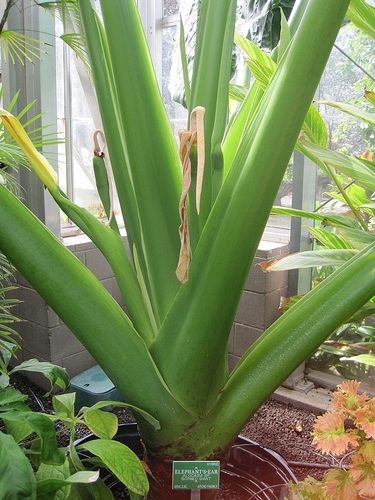
Pictured are the stalks of elephant's ear taro ("Borneo giant" Alocasia sp. hybrid).
Many people are familiar with taro, that grenade-shaped root that's white, grey or purple on the inside and most commonly used to make poi in Hawaii or cakes and chips in Asian countries.
In fact, the stalks and leaves that grow out of this root above ground are edible and just as delicious as the taro root. There are many varieties of taro, and there seems to be a confusion on whether Elephant Ear - which you might have in your garden - is edible or not.
Most varieties are edible, but click the link below to make sure you've got the right one before tucking in.
Photo credit: Joel Abroad via photopin cc
Where can I find taro and stalks?
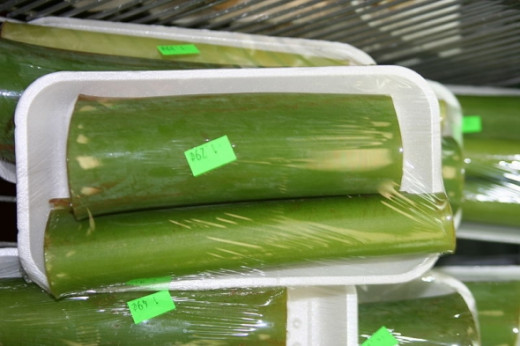
Picture by ChildofMidnight GFDL, CC-BY-SA-3.0,via Wikimedia Commons
Living in a tropical country, I can find taro roots, stalks and leaves at any farmer's market. It's also very easy to grow at home and makes a nice decorative plant.
If you live in a temperate climate, you might like to try looking in Asian or other ethnic grocery stores or in the exotic section of your local supermarket. The picture above is taken from an Asian market in California.
Taro can also be found in people's gardens - you might have some growing without knowing it! Just be extra careful and make sure it really is taro before you eat it. Taro and Elephant Ear are the same family and are often mistaken for each other.
How to prepare taro stalks for cooking
Whether you end up using my recipe or another one, it's handy to see how to prepare taro stalks for cooking. You'll need to peel the membranes off the stalk, clean them well and chop them before use.
My apologies for the photos, which aren't the best. It's the rainy season here in the tropics, and the house was dark when I took them.
Choose your taro stalks
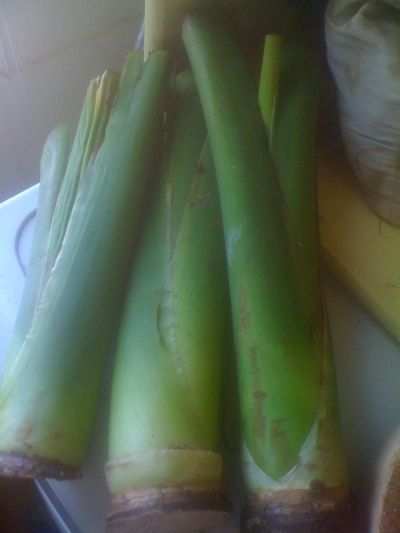
Peel off the thin film
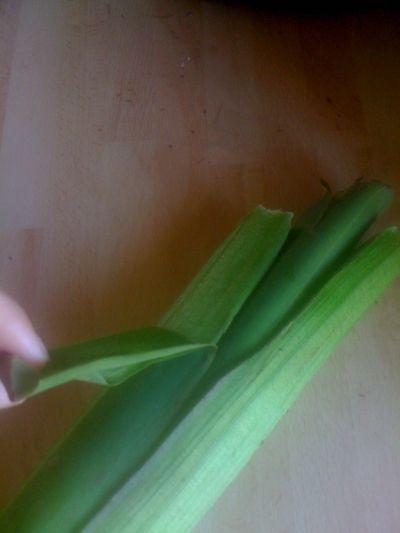
Take apart the stalk for better access
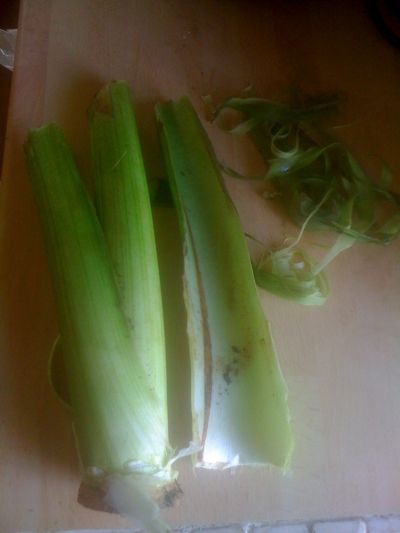
Wash thoroughly
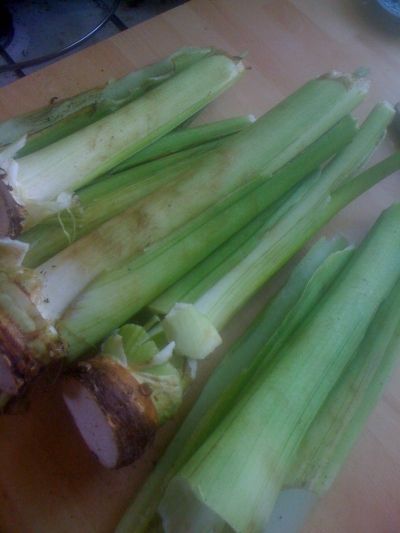
Cut off any remaining taro root
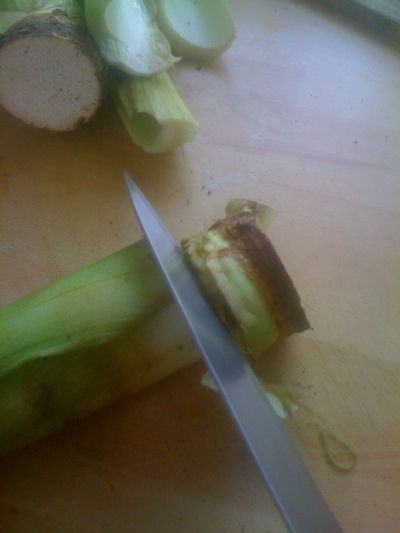
Slice the taro stalks
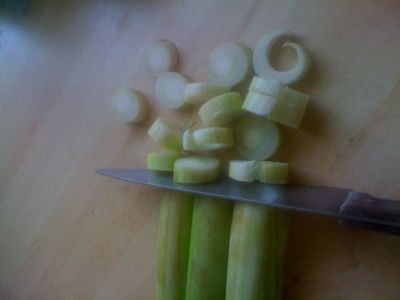

Must-have equipment for a great Taro Stalk gratin

Making Taro Stalks au Gratin step-by-step
Click thumbnail to view full-size









Other recipes for taro and taro stalks
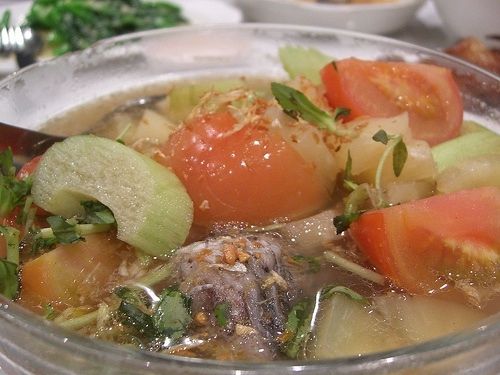
photo credit: avlxyz via photopin cc
I just love taro. The root is dense, delicious and very versatile while the stalks are great at absorbing the flavours of whatever they're cooked with.
I've got a few recipes saved to make in the near future. Don't they sound tempting?
- Taro stalks with coconut and chillies
- Use the taro root to make crunchy baked chips
- This steamed taro cake with Chinese sausage and shrimp looks unique yet delicious.
- Or how about a fish noodle soup with taro stalks?

